Art & Exhibitions
Viral Pranksters MSCHF Secretly Replaced a Sink at the Met Museum
"Met’s Sink of Theseus" is one of the works now on view at the collective's new show at Perrotin L.A.
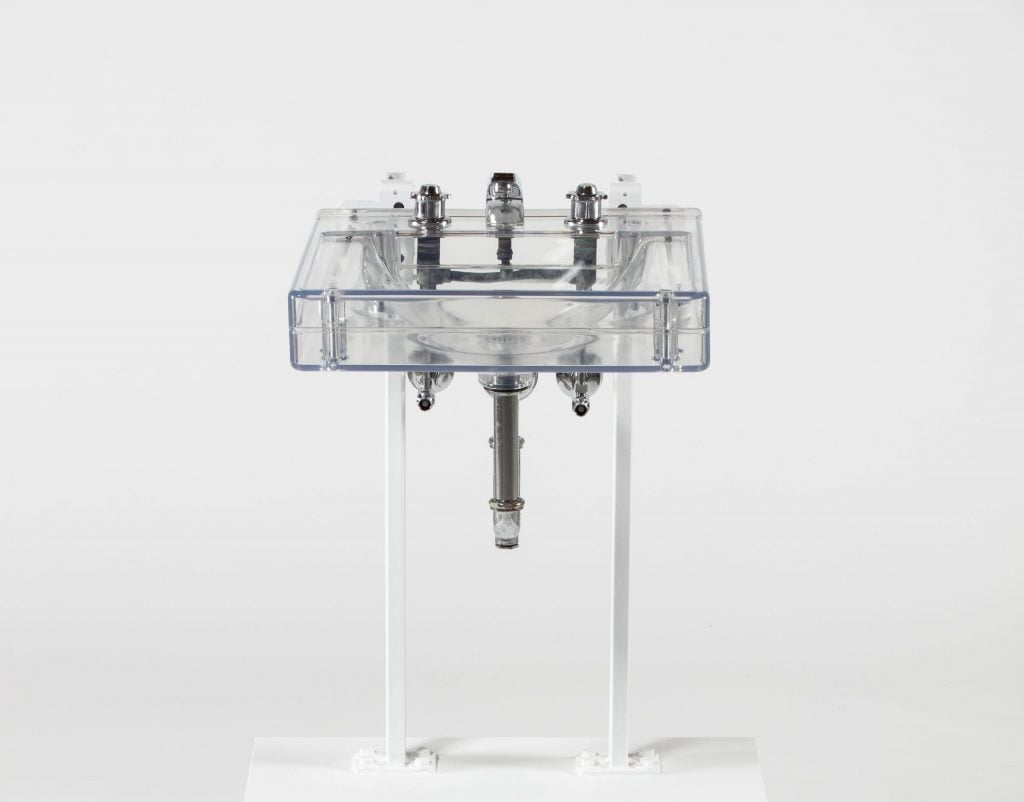
They’re the team known for viral sensations—cartoonish big red rubber boots based on an anime character; an ATM that publicly displays the bank balance of all those who use it, in the manner of a video game; and Nike Air Jordan Max 97 sneakers that contain a drop of holy water from the River Jordan. Now, the collective MSCHF—call them artists, call them a start-up, call them Internet pranksters, but definitely call them “mischief”—has trained its penetrating gaze on New York’s Metropolitan Museum of Art, where they have secretly replaced the handles, water lines, and other parts of a bathroom sink, right under the staff’s noses.
In an Instagram Reel, disguised voices coming from pixelated faces discuss the… performance? Robbery? Stunt? “I think we should do the Met,” said one. “You want to steal some art?” responded another. “No. I want to steal a sink.” They specify that before absconding with pieces of the plumbing, they’re replacing them with better parts, so it does seem like a victimless crime, if not even a favor. If guards come, they figure, they’ll just say they’re plumbers. And anyway, if they get busted, they asked, “What’s changed?”
The piece, while ultra-modern in its readiness for social-media virality, actually refers to an ancient thought experiment. It’s called Met’s Sink of Theseus (2024) in reference to the Ship of Theseus, or Theseus’s Paradox, which asks whether an object that has had all its parts replaced is still essentially the same object.
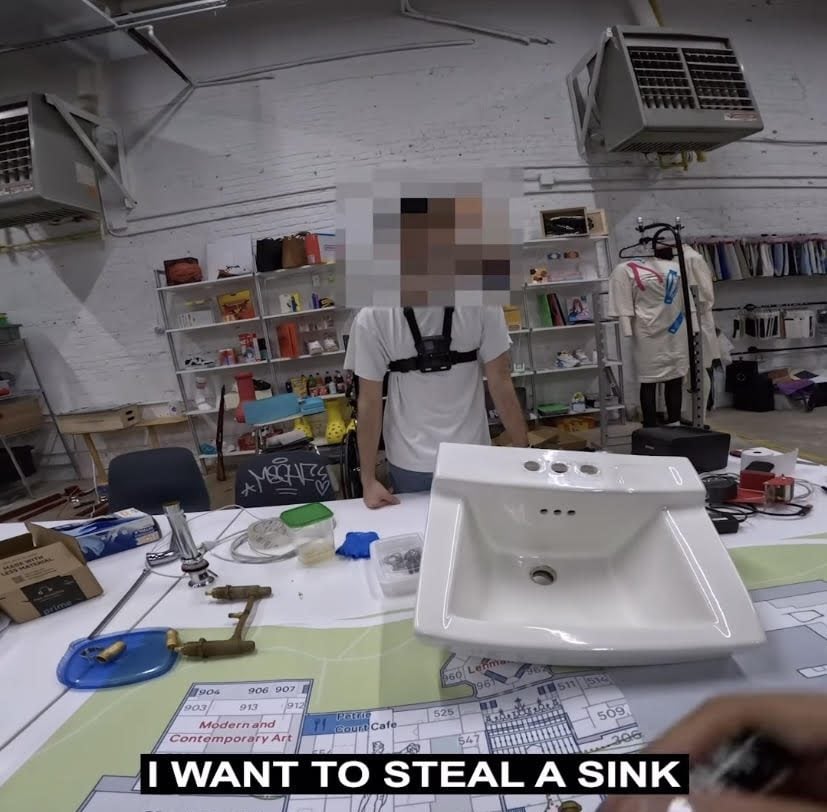
Still from a MSCHF Instagram reel.
Met’s Sink of Theseus appears in “Art 2,” the collective’s new show at Perrotin’s Los Angeles outpost, where it is displayed fully reassembled, with clear plastic replacing the porcelain basin (which they did not steal).
There were several factors that made the Met and a sink the perfect targets, said the collective’s Kevin Wiesner and Lukas Bentel on a FaceTime call while installing the show.
“They’re one of those institutions that has such cachet that anything that goes in or out of there gains in value,” said Wiesner. “It’s the same sink as you can find in who knows how many other buildings in New York. But we now have work in the Met Museum.”
They also have an odd popular appeal, he added: “Weirdly, the bathrooms are fairly well-documented by celebrities who attend the Met Gala and go to the bathrooms to take photos.”
And, Bentel added, the disassembled-and-reassembled nature of the piece recalls certain artifacts in the museum’s collection. “There are a lot of artworks in that museum that were taken from various places and then assembled there,” he said.
The mini-heist comes at a moment when museums are under serious scrutiny for their security practices. The British Museum recently has seen hundreds of objects stolen, and a wave of thefts of Chinese antiquities at Western museums has given rise to speculation that the Chinese government may be resorting to rogue practices to get the objects repatriated. MSCHF’s members were definitely concerned about Met security, though. “There were a number of stressful moments,” Bentel said. “Not to get into too much detail, but there were a number of times when we thought it would go not well for us.”
The museum declined to comment.
The prank takes its a place in a century-long tradition of plumbing, sinks, and toilets as art. Marcel Duchamp’s first readymade, Fountain (1917), was a urinal turned on its side. Robert Gober’s 1980s sink sculptures, missing all the functional fixtures, lent uncanny bodily associations to these domestic basins. In 2016, Maurizio Cattelan installed a golden toilet, straightforwardly titled America, at the Guggenheim Museum, and a 2018–19 public art installation in New York’s Madison Square by Arlene Schechet was inspired by a residency at a toilet and sink factory.
Referring to this long line of bathroom art, Bentel joked, “At one point we hope to assemble the whole set.”
“I don’t know if it’s the oldest sink in the museum,” Wiesner said. “Some have been converted and updated, whereas this one is from the early 1900s and has all stock parts that are very easy to find and replace.” They declined to say exactly which bathroom the replaced sink is in, but they did let on that it’s closer to the Temple of Dendur (certainly one of those specimens that was brought to the museum piece by piece) than not.
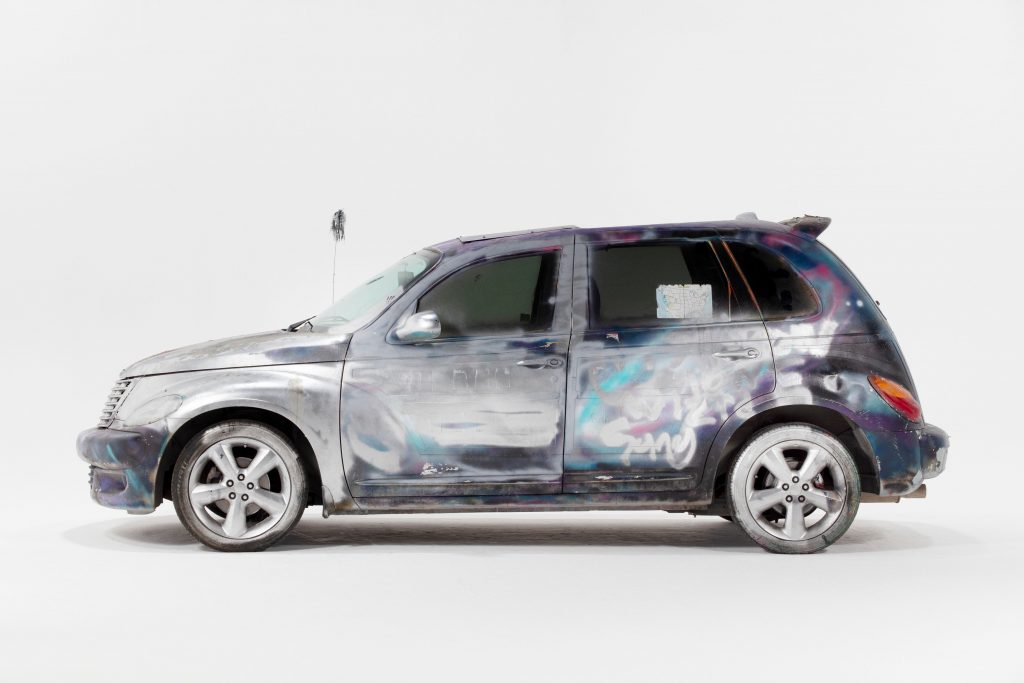
MSCHF, Public Universal Car (2022). Courtesy of MSCHF and Perrotin.
The new show treats the theme of second acts. It also features works like Public Universal Car, a 2004 Chrysler PT Cruiser that allowed thousands of people nationwide to access a single vehicle with duplicate keys. Another piece consists of 250 identical small wooden sculptures of fish hanging on a wall; one of them is a Picasso work, raising the question of whether a single collector will buy up the whole “school” or whether various buyers will try to pick the “right” one.
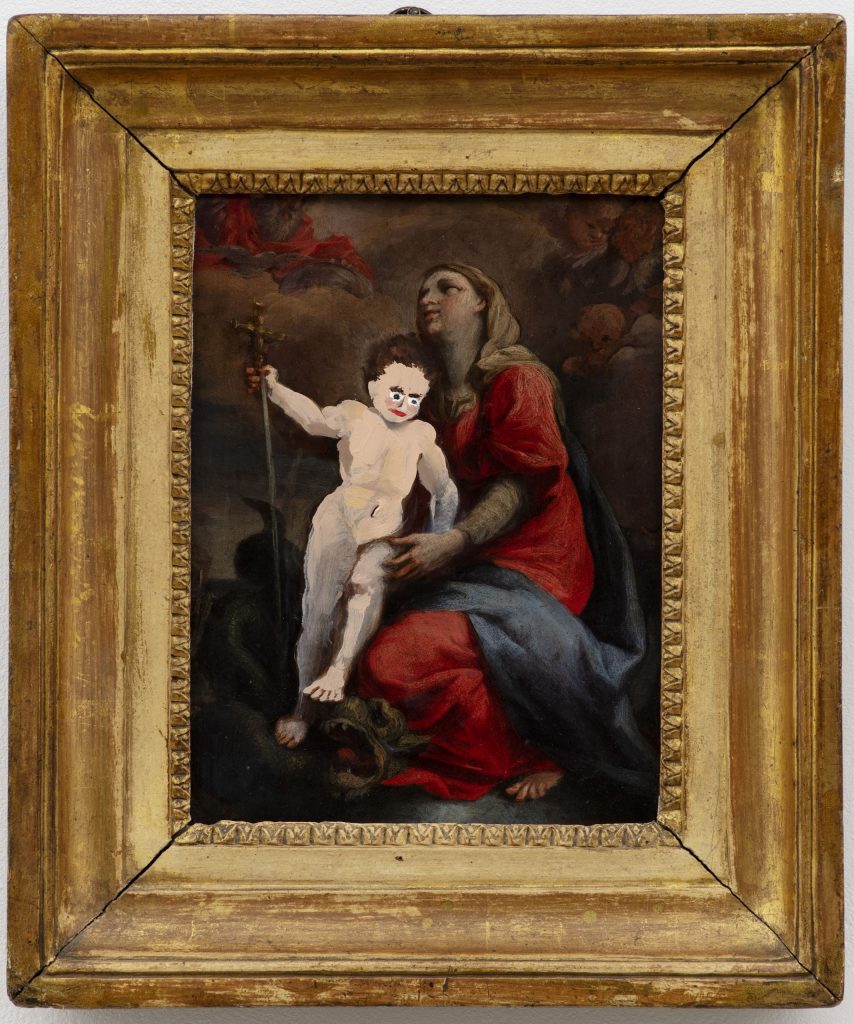
MSCHF, Botched Painting (Ecole Siennoise, fin du XVIIe siècle Vierge à l’enfant terrassant le dragon), 2023. Courtesy of MSCHF and Perrotin.
Another group of works refers to 2012’s viral “Beast Jesus,” which came into being when a well-meaning amateur Spanish artist tried to restore a painting at her church, with results that were an aesthetic disaster but tourism gold. MSCHF bought a handful of antique religious paintings and hamfistedly “restored” them, with the question of whether, they, too, could increase their value (a bit like the parts of the Met sink).
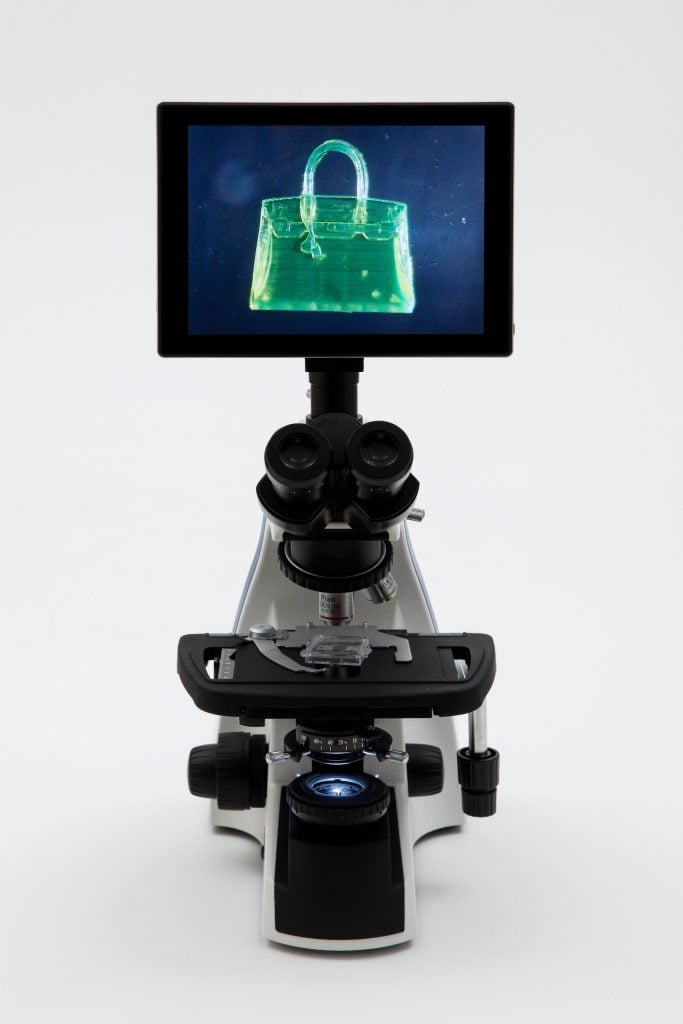
MSCHF, Microscopic Handbag (Hermes), 2024. Photo: Guillaume Ziccarelli. Courtesy of MSCHF and Perrotin.
Parodying fashion drops is Microscopic Handbags, consisting of 3D-printed accessories that are visible only under a microscope, recalling the ancient Indian fable of the weavers who deceive a ruler by giving him a robe that supposedly is visible only to those worthy of seeing it. When he models his imaginary finery, a child calls out, “the emperor has no clothes.”
Speaking of clothes, Wiesner and Bentel admitted that, in their artist duds on FaceTime, they didn’t exactly look like plumbers, raising the question of how they passed. They declined to say who exactly visited the museum, not wanting to expose any individual to liability (perhaps the same reason the faces and voices are disguised in the Instagram video though the members’ identities are known).
They did seem to fool some people, though, said Bentel. “Visitors would come out of the stall and say, ‘I don’t want to make more work for you, but the toilet is really leaking in there.’”
“Art 2” is on view at Perrotin, 5036 W Pico Blvd, Los Angeles, through June 1, 2024.





